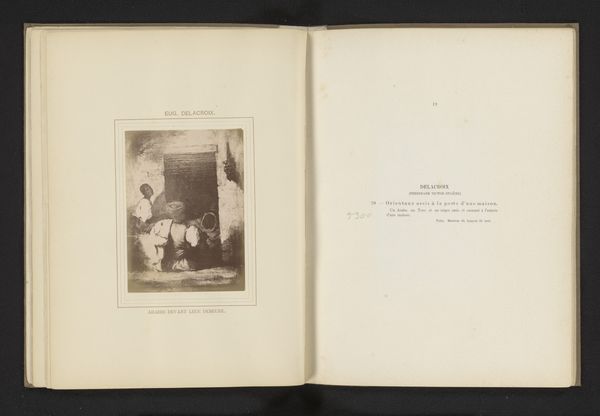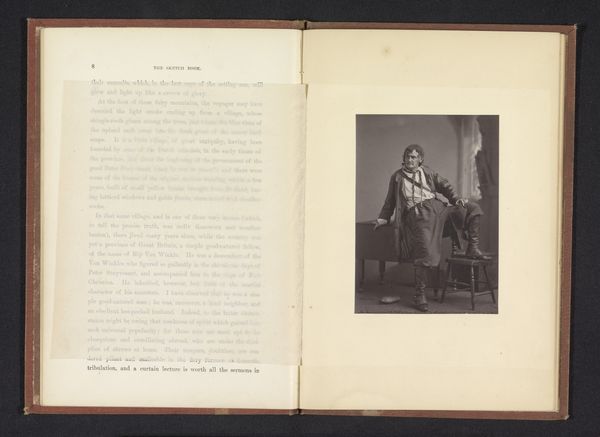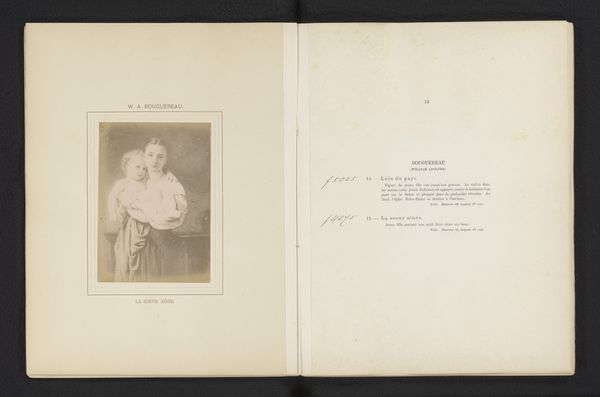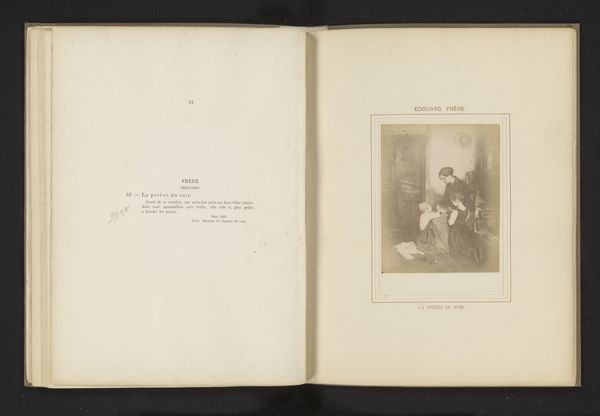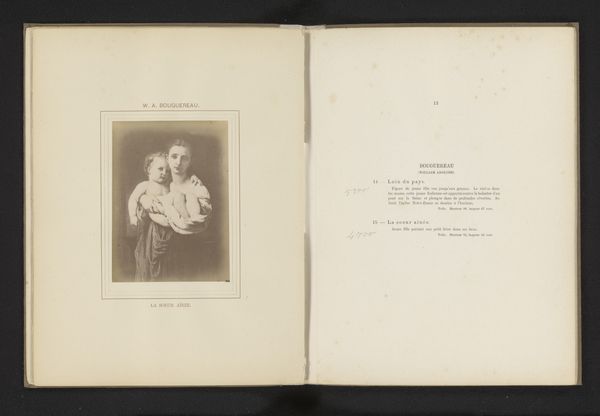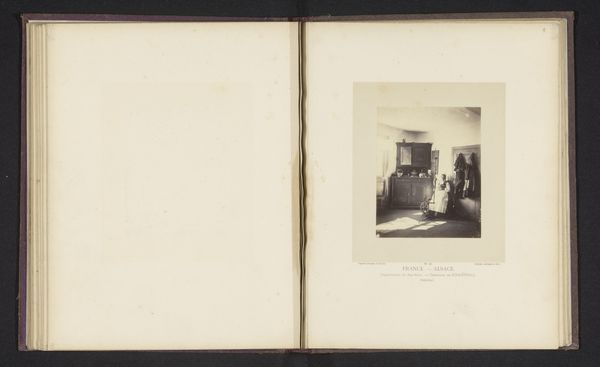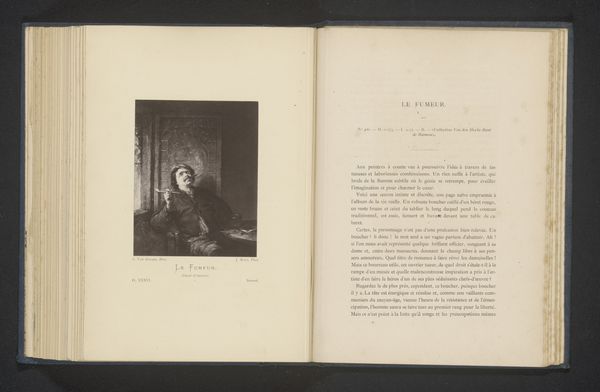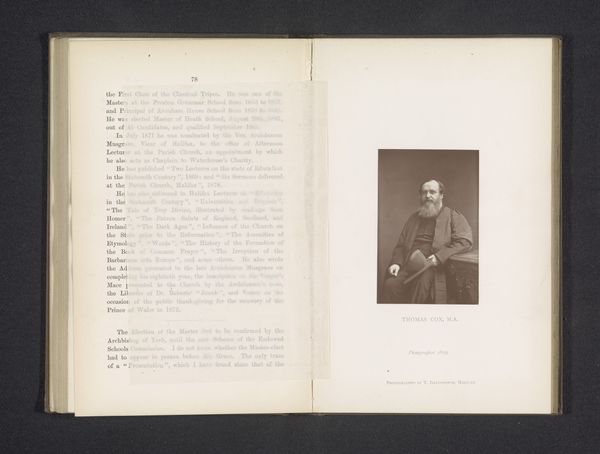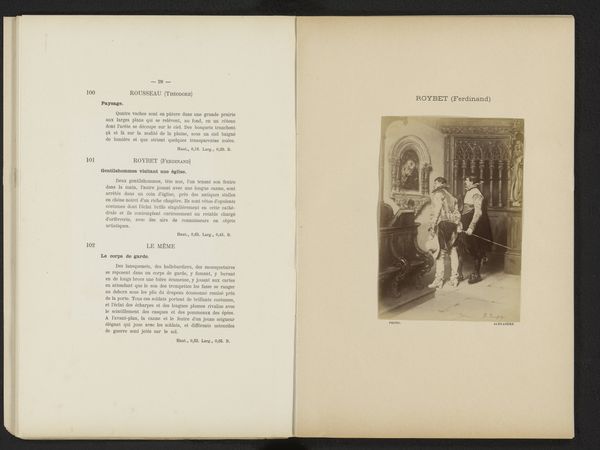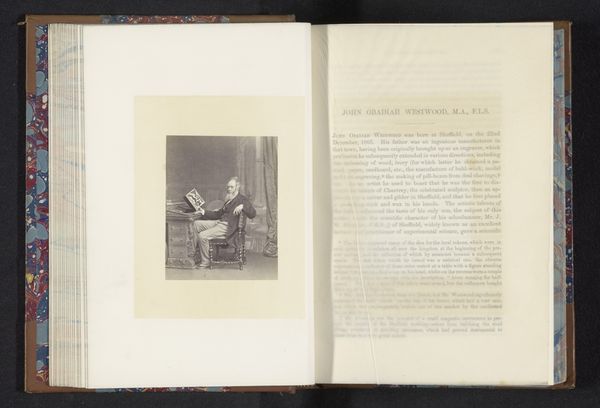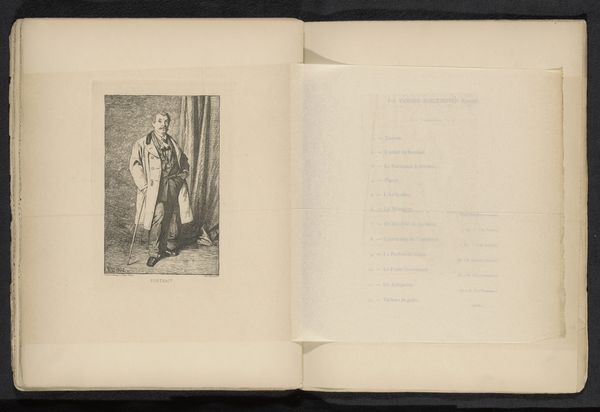
photography, gelatin-silver-print
#
portrait
#
photography
#
gelatin-silver-print
#
genre-painting
#
realism
Dimensions: height 133 mm, width 119 mm
Copyright: Rijks Museum: Open Domain
Curator: Before us we have an albumen silver print dating from before 1872 entitled “The Blind Beggar”. It appears to be the work of an anonymous artist. What strikes you most upon seeing it? Editor: There’s an undeniable starkness here. The tonal range is narrow, and there is almost a melancholy to the arrangement of these figures set against the architecture behind them. Curator: Precisely, let's examine this composition more closely. The work is a masterclass in the employment of classical techniques for social realism. It centers a bearded older man with what appears to be a young woman at his side holding a basket for alms. It’s this figure of poverty and the artist’s decision to render it with such formality, such fine detail, that arrests my attention. Editor: I am with you there. There’s a compelling tension between the formality and obvious poverty presented here. While the realism imitates the style of painting to be documentary, I think it actually amplifies questions regarding poverty, class, and access, specifically within the British class system, perhaps reflecting some of the realities during its era. Curator: That’s quite astute, I must say! It prompts us to confront Victorian-era social realities, right? But on a more purely compositional note, let’s appreciate the formal placement of the figures against the architectural elements behind them. Look at the repetition of vertical lines; the pillar to the left is subtly echoed in the lines of the man’s robe and the contours of the steps behind them. Editor: Yes, it provides order—however—that pillar! It stands there looming large. The building looming over their shoulder—who lives in this beautiful home and where does the access lie to safety. What does this visual positionality actually convey? Curator: Ah, so we see, there’s a play between surface and structure here: realism presented as objective fact but carefully mediated through aesthetics. To truly decipher, one must consider semiotics. Editor: It leaves me unsettled, deeply contemplating the era's sociopolitical structures and their enduring relevance in contemporary debates around poverty, access, and human dignity. Curator: And I, recognizing how its construction plays an intrinsic role. This conversation has definitely made me reconsider its meaning and impact in a new way.
Comments
No comments
Be the first to comment and join the conversation on the ultimate creative platform.

